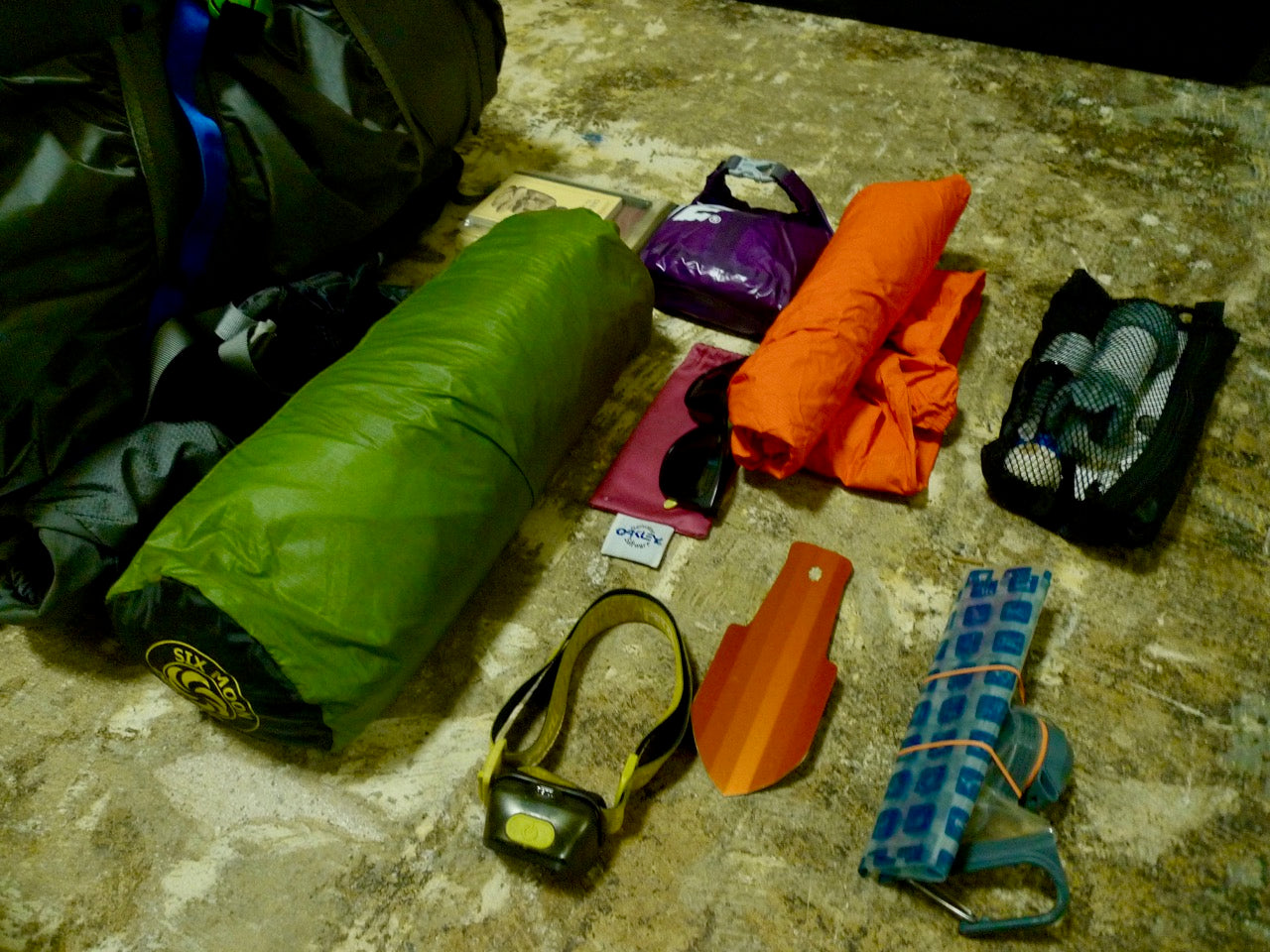How To: Pack Your Instagram Gear Layout into the Mariposa
We all love seeing other people's gear laid out all organized for the pre-packing social media post–Gossamer Gear even immortalized that scene for a "take less, do more" hat. Yet, I've always been left with a nagging question: "Where is all that stuff going?" Or, more specifically, "How are they packing it?"
One of the biggest advantages that the award-winning Mariposa pack holds is the layout of pockets. With a 36L main compartment, Gossamer Gear includes the capacity of all the external pockets to add up to the advertised 60L capacity. As I packed mine for the first time, I was struck with how useful this pocket layout was–the things I needed were easily accessible. With the use of a spreadsheet that I happily pour over in my downtime, I've honed my packing over the last year, and with this information, I'm going to answer that question of how . Using the Mariposa can improve your days on the trail with an easy way to actually pack that Instagram-worthy gear layout.

Main Compartment
I start packing the main compartment of the Mariposa by loading my hydration bladder in place, filled with whatever I need to make it to the first water source–bonus: my filter can fill directly into the bladder without removing it. I specifically use the Platypus BigZip because they've shaped the bladder using an internal rib, keeping the profile more flat and wide.
Next, in a holdover from days past, I use a trash compactor bag to help keep my sleeping gear dry. Sleeping clothes are stuffed down to the bottom, and I push my loose sleeping bag or quilt down on top of that. Keeping all this loose helps avoid the need for compression cords or straps.
I compress the bag down with my BearVault 500, which doubles as a camp stool. This also makes internal organization easy, as pretty much everything smelly or food-related goes inside there, including cooking gear. I fill the spaces around the BV500 with my rolled sleeping pad, puffy jacket, and fleece midlayer–easily repacked if I need to pull the can out to eat lunch.
Top Lid & Mesh Back Pocket
I keep only my car keys and wallet in the top lid of the Mariposa, a personal towel and SUL summit pack in the mesh back pocket, and secure the main compartment. Barring any major weather change or emergency, I likely won't touch any of this again until setting up camp.

Right-Side Pocket
The long, right-side pocket of the Mariposa is PERFECTLY sized to hold most UL shelters. I've carried a Tarptent Rainbow and a Six Moon Designs Lunar Solo in this pocket, with the latter fitting almost entirely inside.
Left-Side Top & Bottom Pockets
I am a huge fan of the Aloksak waterproof bags, as opposed to the more disposable Ziploc bags. I keep several of the 4"x7" bags on hand, and use them to pack my first aid kit, spare parts and emergency kit, and a notepad/small book and pen. Recently, I've put the first aid and emergency supplies inside a dry sack, which further protects them and makes moving it all from pack to pack a breeze. This also fits perfectly into the left top pocket of the Mariposa. I'll also keep my sun/eyeglasses there, along with my headlamp.
My water filter kit, spare water bottle, rain shell, trowel, and toilet paper all fit neatly rolled up next to each other in the Mariposa's left bottom pocket.

Hip Pockets
Last, but not least, the hip pockets. I keep my map, compass, and phone in one side. Snacks and a baggy with bug spray/lip balm/sunscreen go in the other side for quick access on the move. I have also added a simple Zpacks drawstring shoulder strap pocket to carry my binoculars.

Packing It All Together
As the old nautical saying goes, "A place for everything and everything in its place." When I'm all done, I usually end up with a pack weight in the mid-20 pounds range, depending mostly on my food/water situation. The profile is kept low (below my shoulders), which I prefer so I can keep space for a wide-brimmed sun hat. Most importantly, though, finding what I need in the Mariposa throughout the day, and repacking everything to hit the trail the next morning, is easy, leaving more time to enjoy the trail and camp.
